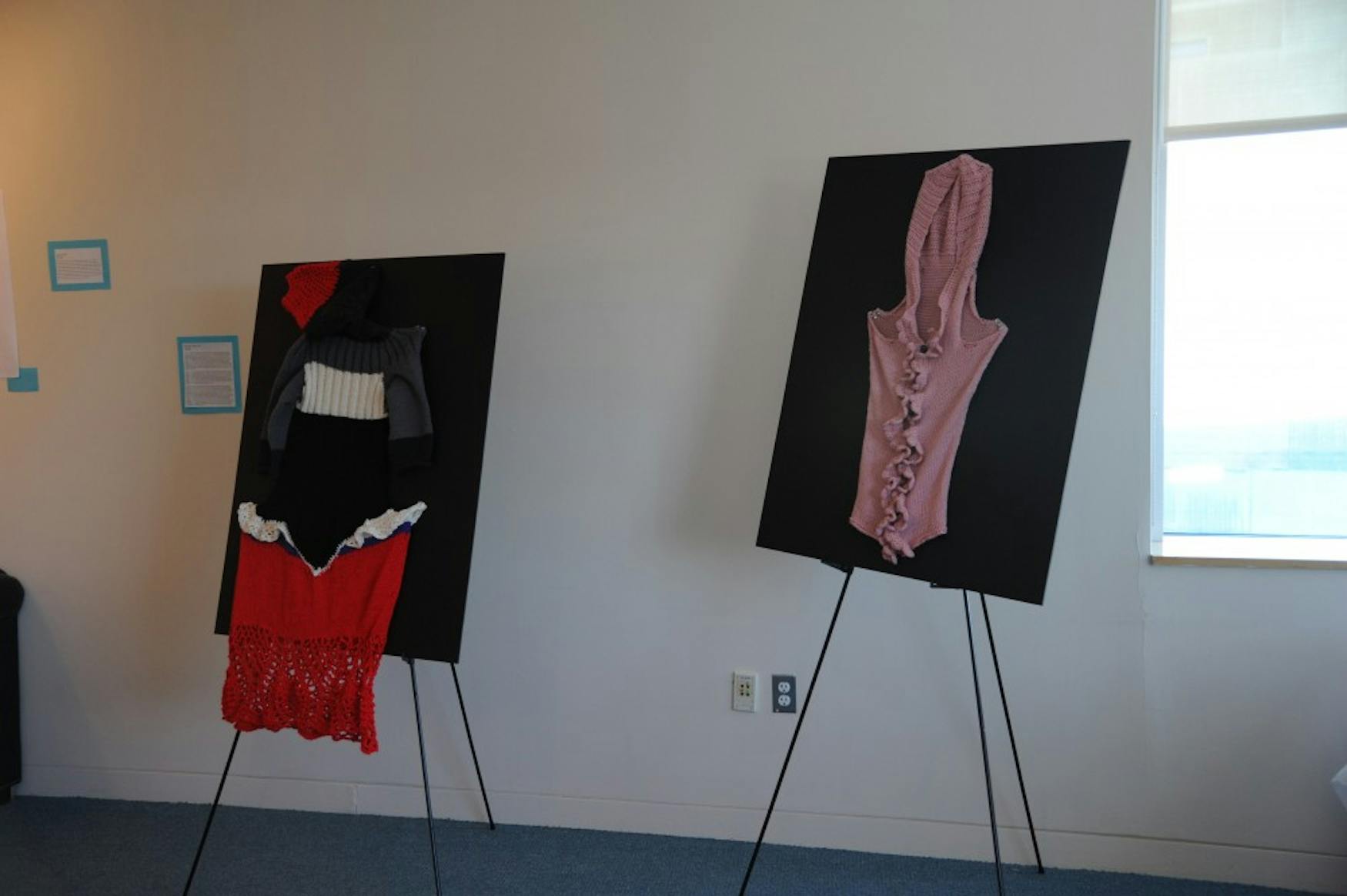Exhibit focuses on pluralism and justice
As part of ’Deis Impact, the University’s annual festival of social justice, the Brandeis Pluralism Alliance opened BPArt: Pluralism and the Arts on Friday. The exhibit, located in the Shapiro Campus Center Art Gallery, is compiled of submissions from the Brandeis community meant to demonstrate interpretations of pluralism and social justice.
All submissions are featured in the exhibit, but three submissions will be chosen for three different monetary awards of 200, 150 and 100 dollars. The website devoted to the exhibit contains a link for the public to vote for their favorite contenders. The two non-student participants, Prof. Marty Levin (POL) and Women’s Studies Research Scholar Marguerite Bouvard, chose not to partake in the competition.
The exhibit is an intimate and simple one. The one-roomed gallery is filled with works of a variety of different media, including photographs, printed poems, clothing and books. There are also YouTube links to audio-visual pieces displayed in the gallery. The works are scattered on the walls in what seems like no particular order—different media are arranged next to one another, perhaps as a symbol of pluralism.
The first piece upon walking into the exhibit, Sneha Walia’s ’15 poem “Becoming Peshawar” speaks about how, at times, there seems to be a disconnect between learning about social justice in a liberal arts environment and actually doing good deeds in the real world. The poem discusses the rhetoric of academia and how disengaged the curricula may be from real life. Walia ponders, “And I can choose to stand up to injustice/ Or I can choose to spend the night in the library/ Taught to think I am enacting a difference/ By thinking about civil liberties.”
A couple of works down, a collection of photograhs by Catherine Novas ’17 depicts four portrait photos arranged in a square. A photo depicting buildings in Ziv Quad accompanies the collection, hanging just underneath.
The figures in the portraits, who seem to come from all different cultural backgrounds, look off to the side of their frames and seem pensive. “My photographs bring to surface the reality of what it is like to be a person of color within a private institution,” reads the sign next to the collection. Novas also wrote that her work was inspired by “I too am Harvard,” a photo project that focuses on black voices at Harvard College.
“Public/ Private Enemy” by Amanda Pereira ’15 portrays a painted black silhouette of a woman from the bust up, an image covered by a painted target shape. The woman and the target seem to be interlinked at times, as they are both the same shade, perhaps symbolizing an unjust connection between the two.
In her note, Pereira says the painting is inspired by the hip-hop group Public Enemy’s logo. “This piece represents the need to remember and fight for the lives of the trans and cis womyn in the #BlackLivesMatter movement and beyond,” reads her note.
There are two articles of clothing on display in the exhibit—a pink sweater and a multicolored dress, created by Aviva Paiste ’15. These pieces are anything but typical attire, however, and, while creating them, the artist had clearly thought a lot about what these pieces were going to signify. The pink sweater represents the anatomy of a vagina. The pink ruffles running down the middle and the large hood at the top makes the symbolism hard to miss. “There are so many phallic symbols in the world, and the few images of female genitalia are often mislabeled and/or have incorrect information,” Paiste wrote. As a result, it is clear that the artist has made sure that her representation of a vagina is accurate. In her note next to the piece, Paiste said that the sweater could be made any shape, color or size.
The dress is similarly interested in representing and highlighting aspects of the female body. The hip region of the dress is exaggerated with extra cloth and frills. Paiste wrote in her note that the decorative frills around the hips are meant to draw the eye and extend the size of the hips.
The dress also features a hood that is meant to cover the face. “From the top down, [this] piece speaks to the silencing, restricting, and sexualization of women,” Paiste writes.
The opening reception with live performances of submissions will take place on Thursday from 5 to 8 p.m. The exhibit will run through Feb. 8.



Please note All comments are eligible for publication in The Justice.